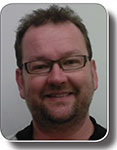Measurement While Coring (MWC)—measurement of core acquisition in real time
Greg WheatleyCoretrack Ltd
The APPEA Journal 49(1) 25-30 https://doi.org/10.1071/AJ08003
Published: 2009
Abstract
Coring technology has remained relatively unchanged for decades. One of the primary technology gaps has always been the lack of real-time data at the surface on core recovery. Coretrack has developed the Core Level Recorder (CLR), a core recovery tracking tool that delivers accurate core-to-reservoir correlation. The CLR can be coupled to a mud pulser system to deliver surface readout on the core recovery process delivering accurate core-to-reservoir correlation in real time. The CLR is placed inside the inner core barrel and moves upwards as core is recovered into the barrel recording the amount of rock captured in a time versus distance format. The transmission of this data to surface provides the real-time information on whether or not core is being recovered and accurately records any gaps in the process allowing the core to be correlated to the formation with ±50 mm accuracy.
The CLR has been designed for use in both water and synthetic oil based drilling fluids of up to 125 °C and 10 kpsi with runs carried out in a variety of both on and offshore wells in Oman, Saudi Arabia and Australia. The CLR can be run in deviated holes and in all currently available core barrels. The most common size is for 4 inch core, however it is easily adapted for other barrel diameters.
Real-time data transmission enables the coring technician to accurately state when core is being recovered. This greatly increases the ability to state when core milling or core jams have occurred—a notification that removes unnecessary round trips and brings significant savings.
This paper will present case histories of runs made with the CLR.

Greg Wheatley has a PhD in mechanical engineer- ing from the University of Western Australia. His PhD work in fatigue failure of rail in the Pilbara region of Australia was industry supported by a global mining company. After completing his PhD, he was awarded a postdoctoral fellowship position at the National Institute for Materials Science in Japan working on fatigue failure of welds. He then worked in product development and commissioning for five years on a new nondestructive testing product in the aviation industry. Greg returned to resources and spent years in project management and tech- nical areas in the oil and gas and mining sectors. He now heads the technical department for Coretrack Ltd. He has published over 20 technical journal and conference articles. greg@coretrack.com.au |


